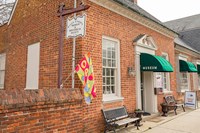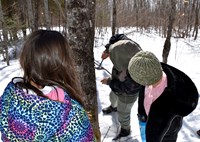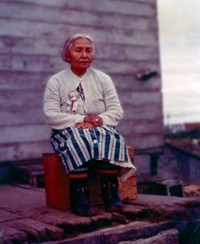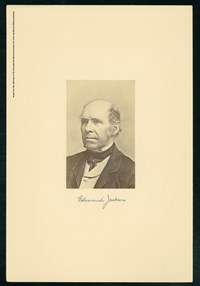- Lewis & Clark National Historic Trail (36)
- Pipestone National Monument (18)
- Golden Gate National Recreation Area (17)
- New Orleans Jazz National Historical Park (17)
- Puʻuhonua o Hōnaunau National Historical Park (16)
- Sitka National Historical Park (14)
- Acadia National Park (13)
- Bering Land Bridge National Preserve (11)
- Glacier Bay National Park & Preserve (11)
- Show More ...
- National Register of Historic Places Program (21)
- National Historic Landmarks Program (11)
- National Heritage Areas Program (9)
- National Center for Preservation Technology and Training (8)
- Youth Programs (7)
- Youth Programs Division (7)
- Archeology Program (6)
- Historic Preservation Training Center (6)
- Harpers Ferry Center (5)
- Show More ...
Showing 795 results for Traditional NOLA Jazz ...
BLISS Meadows
- Type: Place

Discover BLISS Meadows, a 10-acre urban farm and land reclamation project in Northeast Baltimore. This unique space offers walking trails, farm animal interactions, and hands-on gardening workshops. Learn about sustainability, food justice, and the contributions of Black, Indigenous, and People of Color communities while enjoying fresh produce, honey, and community events. Experience nature, education, and social change in the heart of the Chesapeake Bay watershed.
Essex County Museum & Historical Society
- Type: Place

The Essex County Museum tells the story of the Rappahannock River and Essex County’s rich history. Explore exhibits on early American exploration, the Revolutionary War, local river traditions, and the Pirates of the Chesapeake. See a scale model of Fort Lowry, boat models, and a 16-foot pictorial map of the river. Visitors can also enjoy the charming courtyard with a NASA Moon Tree and find unique artifacts from the steamboat era.
- Type: Article

Today's visitors know the Georgia-style home on Capitol Hill as the Belmont-Paul Women’s Equality National Monument. The National Woman's Party knew it as a symbol of their proximity to political power and their perseverance as an organization. The NWP spent 40 years fighting Congress to keep their headquarters. As fierce protectors of the Belmont House, the NWP carried on a tradition of women as historic preservationists.
Iskigamizigan (Sugarbush)
- Type: Article

Maple sugaring is one of the Anishinaabe/Ojibwe lifeways passed on to younger generations within the Grand Portage community. Ziinzibaakwad (maple sugar) is a traditional Anishinaabe/Ojibwe food. Producing it is an important community event where friends and family gather at the iskigamizigan (sugarbush) in a ininaatig (maple) grove.
Edmund Jackson
Bull Boats During the Fur Trade
- Type: Article

Commonly associated with the Mandan, Hidatsa, and Arikara, bull boats were necessary to cross rivers in the West. Weighing as little as thirty pounds and made from the hide of bison, they replaced canoes west of Grand Portage as essential transportation for the fur trade in a landscape where birch was scarce.
Brinegar Cabin
Wudzixeedi Gooch “Multiplying Wolf” house screen
Women's Monument Exhibit
- Type: Article

The National Park Service (NPS) is on a mission to deepen its understanding of the bees living in parks. Traditional survey methods require significant time, specialized expertise, and the collection of specimens from their natural habitats for species-level identification. With limited bee specialists available and a growing need for efficient, cost-effective methods, the NPS sought an alternative approach.
Tusayan Pueblo Site and Self-guiding Trail
- Type: Place

The pueblo site and self-guiding trail are open Thursday through Friday, from 9 am to 4 pm. Located 3 miles (4.8km) west of Desert View Watchtower, the site is a small Ancestral Puebloan village showing the outlines of rooms and a round kiva. Visitors can walk a relatively flat 0.1 mile (200 m) self-guiding trail around the site. Visit the Native American Artisan Market with authentic and beautiful arts and crafts for sale. The adjacent museum is CLOSED until further notice.
- Type: Place

Experience the Chesapeake Bay Maritime Museum and discover historic boats, engaging exhibits, and all-ages programming that celebrate the Bay's history, environment, & culture. Watch skilled craftsmen in the working shipyard and enjoy scenic waterfront views. Located in St. Michael’s, this captivating destination invites you to explore the Chesapeake story through hands-on learning, world-class exhibitions, & on-the-water experiences. Your Chesapeake adventure begins here.
Visitor Contact Station Kaloko Honokohau
Spring 2025: Ballet Folklorico
Why Snowshoe Hares Use Mineral Licks
- Type: Article

After nearly 20 years, the snowshoe hare population in the central Brooks Range on the eastern boundary of Gates of the Arctic National Park is building toward a peak in the population. Traditional ecological knowledge of the area tells us that the coming peak should be considerably larger than the small population increase we saw in 2008-2010. Based on the report: Snowshoe hare population trends at mineral and non-mineral sites in the central Brooks Range, Alaska.
Patrick J Mogan Cultural Center
Assan through the Ages
- Type: Article

Assan Beach, the 2,500-yard shoreline stretching between Punta Adilok (Adelup Point) and Punta Assan (Asan Point), which the Marines in World War II called a "pair of devil horns," is a poignant symbol of the Guam's complex history, blending indigenous CHamoru traditions, wartime struggle, and ongoing military presence. In many ways, the story of Guam can be read through the story of Assan Beach. Talk a walk through history at Assan Beach.
- Type: Place

Greenwich Village Historic District’s reputation for dynamism can be attributed to its history of emerging artists and writers as well as the political unrest and activism of its inhabitants. With the rise of the counterculture movement during the 1960s, Greenwich Village’s Washington Square Park became a hub for writers and musicians. In 1969, LGB residents of Greenwich Village pushed back against police harassment at the Stonewall Inn.
Pelagia Melgenak
- Type: Person

To learn the story of Pelagia (also spelled Palakia) Melgenak is to learn the sanctity of shared traditions, the loving bonds of kinship and the reverence of a spiritual connection to the land around you. Born in the late 1870s in the remote village of Savonoski in Alaska, Pelagia grew up learning about hunting, gathering, navigating and guiding in the area. That all changed in 1912 with the hot ash falling like a blanket covering the region with the eruption of Novarupta.








